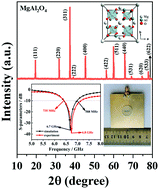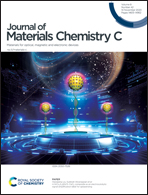Dielectric resonator antennas based on high quality factor MgAl2O4 transparent dielectric ceramics
Abstract
For the first time, a MgAl2O4 transparent ceramic cylindrical dielectric resonator antenna (DRA) is designed using the fundamental HE11δ modes for slot excitation. The transparent microwave dielectric ceramic was synthesized using high-purity MgO and γ-Al2O3 powders by aqueous gel-casting combined with cold isostatic pressing, pressure-less sintering and hot isostatic pressing methods. Optimum relative permittivity ∼8.2, Q × f (Q = quality factor = 1/dielectric loss, f = resonant frequency) ∼110 510 GHz and temperature coefficient of resonant frequency ∼−74.1 ppm °C−1 were obtained. The reflection coefficient, the input impedance, the antenna gain and the radiation pattern of the transparent cylindrical ceramic DRA were examined, and it was observed that the simulation results were in reasonable agreement with the measurement results. It has been found that the proposed transparent cylindrical MgAl2O4 ceramic DRA can provide a higher impedance bandwidth (BW = 735 MHz) and radiation efficiency (95.8%) than a state-of-the-art transparent glass DRA. The proposed configuration can potentially be used for such useful antenna decoration and can be used as a lampshade to integrate these antennas in street and traffic lights without compromising the aesthetics of the city.



 Please wait while we load your content...
Please wait while we load your content...